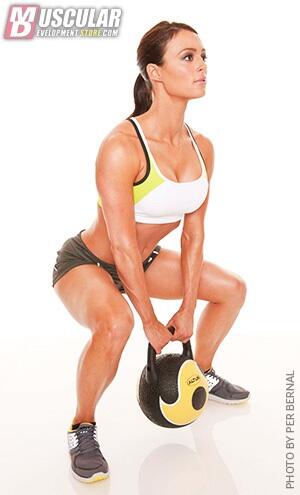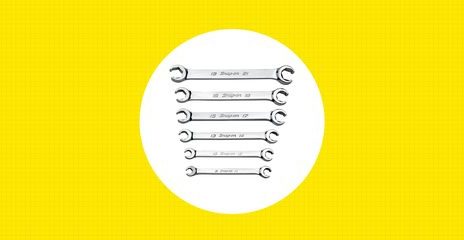Almost anyone can lose weight and have a better body if she is willing to devote the effort. Intense weight training will help.
Women work out for a variety of reasons, including a desire to minimize fat and look fit, lean and toned; be healthier, live longer, have more energy and feel better every day. More specifically, the benefits of exercise include preventing heart disease, diabetes, and high blood pressure. Unfortunately, life gets in the way. Who has time for two-hour workouts necessary to look svelte? Wouldn’t it be nice if you could tone muscle and cut fat by training only one hour per week?
Studies from Southern Illinois University and from the University of Limburg in the Netherlands showed that it is possible to increase metabolic rate and burn 5 to 10 percent more calories every day by doing a high-intensity weight-training workout that takes only 20 minutes. This workout is just as effective for increasing 24-hour metabolic rate as doing 3 sets of 10 reps for 10 exercises.
Based on this research, and several other landmark studies, FitnessRx for Women has developed the 72-Hour Metabolic Booster Workout that will get you in and out of the gym in 20 minutes. Do this workout only two to three days per week and you will sculpt muscle and lose fat.
This workout is not for wimps, and it won’t prepare you for the Olympic team. However, it will help cut fat and tone muscles without spending hours in the gym. You work out quickly, and then get on with your day.
Weight Training for Weight Loss
Weight loss articles online and in print paint a rosy picture about how easy it is to lose unwanted extra pounds. They suck you in with claims like “Lose 20 pounds in a week” or “Sculpt your abs in 8 weeks.” Most people know in their hearts there’s no quick fix, but some people believe the information anyway because “Hope springs eternal.” The staff at FitnessRx for Women prides itself on telling the truth about exercise and weight control. We won’t lie to you. Losing weight is difficult, and some women have more trouble with weight control than others. The good news is that almost anyone can lose weight and have a better body if she is willing to devote the effort. Intense weight training will help.
Lack of exercise makes people gain weight. Physical activity studies conducted in the last 10 years showed that only 12 percent of the population participates in a vigorous exercise program, and 54.1 percent of people do not exercise at even moderate intensities for 30 minutes a day. Decreased physical activity required for daily living accounts for at least some of the American obesity epidemic. Technologic advances made it easier for most people to do little or no daily exercise. The ease and convenience of working from home, as many do, as well as the greater use of laptops smartphones, has increased the time devoted to sedentary pursuits, further reducing physical activity.
A small change in energy balance – consuming more energy than expended – has caused a gradual increase in the American waistline. People consume about 300 more calories per day than they did 30 years ago. That doesn’t sound like a lot. Three hundred calories is only one extra slice of bacon or a few slices of turkey or a couple of cookies or a large chocolate bar. But those calories add up!
Intense weight training can tip the scales back the other way and make it easier to create a caloric deficit. Most health experts advise overweight women to do cardio exercise and cut down on caloric intake. However, many people hate cardio. They want to lose weight but don’t like to jog, ride a bike, or swim. American and Dutch studies on weight training showed that lifting weights only two to three days per week for 20 minutes increased 24-hour caloric expenditure by 5 to 10 percent. Each workout increased post-exercise metabolic rate for 72 hours.
People burn more calories during cardio than weight training. However, weight training increases post-exercise metabolism better than cardio. Also, unlike cardio, weight training has no effect on the amount of physical activity that people do after the workout. People compensate for cardio workouts by doing less activity during the rest of the day. Weight training has no effect on 24-hour physical activity.
72-Hour Metabolic Booster Workout
This workout is designed for the average woman who needs to lose a few pounds but doesn’t have hours to spend in the gym. It is designed to increase daily caloric expenditure by 5 to 10 percent and will increase 24-hour caloric expenditure by about 260 calories per day. Do this workout faithfully, two to three days per week, incorporate a healthy nutrition plan, and you will change from a fat storer to a fat burner.
Consistency is the key. You will only increase metabolic rate if you do the workout consistently. Take a week off and your metabolic rate will return to normal and you will gain weight. Twenty minutes, two or three times a week, is not too much to devote to a thinner waistline and a stronger, trimmer figure.
The program is simple: do 10 exercises for 1 set of 10 reps, with a one minute rest between exercises, two to three days per week. Work hard and train explosively. Go to the gym, work out for 20 minutes, and then get on with your day. Forty to 60 minutes per week is not too much to ask for a slimmer, sexier you.
Choose exercises that work the major muscles of the body. We have presented a sample workout, but you are free to choose almost any exercises that stress the large muscle groups. Do 10 reps of the following exercises, resting one minute between exercises. Do each repetition explosively and move quickly from one exercise to the next. Choose a weight with which you can complete 10 reps with some difficulty using good form.
Two-Arm Kettlebell Swing
Bench Press
One-Arm Kettlebell Snatch, 10 reps each arm
Bent-Over rows
Preacher Biceps Curls (EZ bar)
Triceps Pushdowns
Curl-ups
Side-Bridges, 10 reps, 3-second hold per rep, each side
Squats
One-Arm Kettlebell Swings, 10 reps each arm
Descriptions of the Exercises
Two-Arm Kettlebell Swings: Begin by holding the kettlebell in both hands with palms facing toward you, in a standing position with knees bent, feet placed slightly more than shoulder-width apart, hips flexed, back straight, chest out, and head in a neutral position. Holding the kettlebell at knee level, swing the weight to a horizontal position by initiating the motion with the hips, thighs, and abs (tighten the quads, glutes, and ab muscles as hard as you can), keeping your arm straight and relaxed during the movement. Let the weight swing back between your legs in a “football hiking motion” and then repeat the exercise. During the movement, hinge at the hips and not at the spine. Depending on your strength and fitness, choose a kettlebell weighing between 25 and 50 pounds.
Bench Presses: Lie on the bench with your feet flat on the floor. Grasp the bar slightly more than shoulder-width apart. Have the spotter help you move the bar from the rack to a point over your chest. Lower the bar in a straight line slightly below the end of the breastbone. Push the weight straight up to the starting position.
One-Arm Kettlebell Snatches, 10 reps each arm: Begin by holding the kettlebell in one hand with your palm facing toward you, in a standing position with knees bent, feet placed slightly more than shoulder-width apart, hips flexed, back straight, chest out, and head in a neutral position.
Hold the kettlebell at knee level. Swing the weight to a horizontal position by initiating the motion with the hips, thighs, and abs (tighten the quads, glutes, and ab muscles as hard as you can), bending your arm as it approaches the chest and continuing the motion until straightening it overhead. The kettlebell should rotate from the front of your hand to the back during the motion. Use an upward punching motion at the top of the movement to prevent injuring your forearm. Let the weight swing back between your legs in a “football hiking motion” and then repeat the exercise. During the movement, hinge at the hips and not at the spine. Depending on your strength and fitness, choose a kettlebell weighing between 25 and 40 pounds.
Bent-over Rows: Hold a barbell in front of you, bend at the waist, and bend your knees slightly. Lift the bar to your chest (without jerking) and then return the bar under control to the starting position. Keep your spine in a neutral position.
Preacher Biceps Curls (EZ bar): Place your upper arms on the pad of the preacher stand and grasp the EZ bar with palms up (45° angle). Lower your forearms slowly to near full extension and then curl the bar to the starting position.
Triceps Pushdowns: Using a narrow, palms-down grip, grasp the V-bar of the lat machine and fully extend your arms with your elbows held closely at your side. From this starting position, with elbows locked at your side, allow your hands to be pulled up to your chest, and then firmly push the bar back to the starting position. If your elbows move during this exercise, you are cheating.
Curl-ups: Lie on the floor on your back and bend your knees and place your feet flat on the floor. Place your hands across your chest. Contract your front abdominal muscles, drawing your breastbone downward. Try not to lift your neck or shoulders; let the abs do the work.
Side-Bridges, 10 reps, 3-second hold, each side: Lie on your side and support your body between your forearm and knee or feet (depending on your fitness). Repeat on the other side. Maintain a neutral spine during this exercise.
Squats: Put the bar on the fleshy part of your upper back so that you create a solid foundation for the lift. Stand with your feet approximately shoulder-width apart, with toes outward slightly 40-45 degrees. Squat until your hips are lower than your knees (thighs below parallel). Keep your torso upright and avoid excessive forward leaning so that your hips stay under the bar at all times. Think about “squatting between your thighs.” Push out of the bottom position following the same path that you used during the descent phase. Keep your torso and back erect and maintain your hips under the bar throughout the pushing phase of the lift and return to the starting position. Hinge at your hips and not at your spine.
One-Arm Kettlebell Swings, 10 reps each arm: Begin by holding the kettlebell in one hand with your palm facing toward you, in a standing position with knees bent, feet placed slightly more than shoulder-width apart, hips flexed, back straight, chest out, and head in a neutral position. Holding the kettlebell at knee level, swing the weight to a horizontal position by initiating the motion with the hips, thighs, and abs (tighten the quads, glutes, and ab muscles as hard as you can), keeping your arm straight and relaxed during the movement. Let the weight swing back between your legs in a “football hiking motion” and then repeat the exercise. During the movement, hinge at the hips and not at the spine. Depending on your strength and fitness, choose a kettlebell weighing between 25 and 40 pounds.
References:
Broeder, C. E., et al. 1992. The effects of aerobic fitness on resting metabolic rate. Am J Clin Nutr, 55: 795-801.
Broeder, C. E., et al. 1992. The effects of either high-intensity resistance or endurance training on resting metabolic rate. Am J Clin Nutr, 55: 802-810.
Haskell, W. L., et al. 2007. Physical activity and public health: Updated recommendation for adults from the American College of Sports Medicine and the American Heart Association. Circulation, 116: 1081-1093.
Heden, T., et al. 2011. One-set resistance training elevates energy expenditure for 72 hours similar to three sets. Eur J Appl Physiol, 111: 477-484.
Trust for America’s Health. 2010. F as In Fat: How Obesity Threatens American’s Future, Robert Wood Foundation. http://healthyamericans.org/reports/obesity2010/
U.S. Dept. Health Human Services. Physical Activity Guidelines for Americans, 2008. http://www.health.gov/paguidelines/guidelines/
Van Etten, L. M., et al. 1997. Effect of an 18-week weight-training program on energy expenditure and physical activity. J Appl Physiol, 82: 298-304.
Whatley, J. E., et al. 1994. Does the amount of endurance exercise in combination with weight training and a very-low-energy diet affect resting metabolic rate and body composition? Am J Clin Nutr, 59: 1088-1092.
Wright, J. D., et al. 2010. Trends in intake of energy and macronutrients in adults from 1999-2000 through 2007-2008. NCHS Data Brief, 49: 1-8.
The post 72-Hour Metabolic Booster Workout first appeared on FitnessRX for Women.





